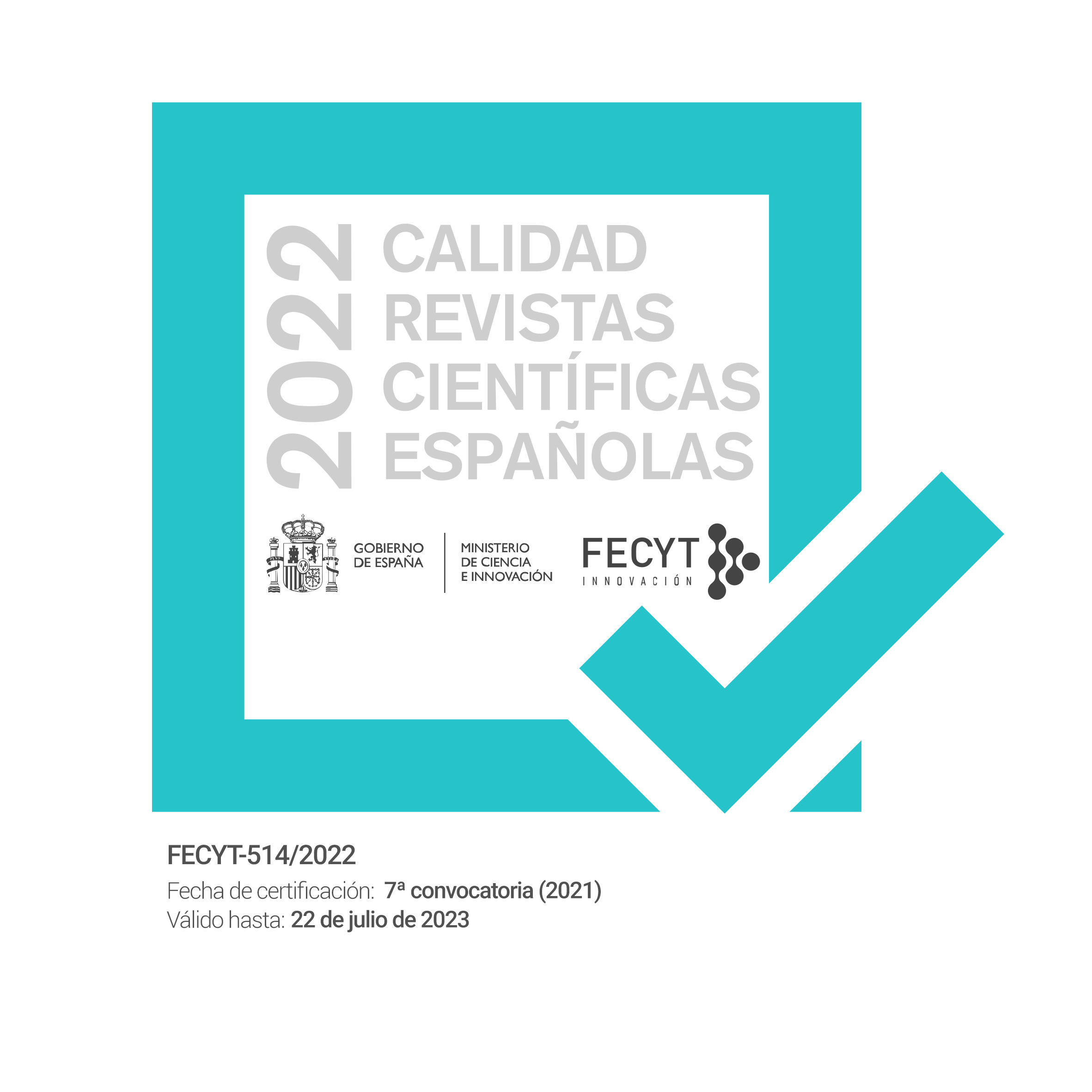“THE FORCES THAT CAME TOGETHER TO INFLICT THAT PAIN”: CLASS, RACE, AND SEXUALITY IN ELLEN FELDMAN’S SCOTTSBORO
DOI:
https://doi.org/10.12795/REN.2022.i26.03Palabras clave:
Scottsboro Boys; Scottsboro; Ellen Feldman; the black beast rapist myth; the southern rape complex; legal lynchingsResumen
En el infame caso de Scottsboro (Alabama, 1931), nueve jóvenes negros fueron acusados falsamente de violar a dos jóvenes blancas de clase baja y dudosa moralidad. Los Chicos de Scottsboro fueron víctimas inocentes del llamado “southern rape complex” y del linchamiento legal automático de cualquier varón negro acusado de violar a una mujer blanca. La protagonista de Scottsboro, basada en gran medida en dos reporteras progresistas del Norte, Mary Heaton Vorse y Hollace Ransdall, que investigaron el caso, aprende sobre las complejas relaciones raciales y de clase vigentes en el Sur, así como sobre su propios prejuicios y privilegios de clase. Al igual que Ransdall y Vorse, informa sobre un episodio en el que dos víctimas de la opresión capitalista son elevadas del nivel de "basura blanca" para convertirse en representantes de la feminidad blanca "profanada", mientras ocho de los nueve jóvenes negros, estereotipados como hipersexualizados e intrínsecamente criminales, reciben sentencias de muerte, todo ello debido a la tiranía de unos valores que no significan nada en la vida de las jóvenes que les acusan.
Descargas
Métricas
Citas
BARDAGLIO, Peter W. “Rape and the Law in the Old South: ‘Calculated to excite indignation in every heart.’” The Journal of Southern History, vol. 60, no. 4, 1994, pp. 749-772.
BARKER, Deborah E. Reconstructing Violence: The Southern Rape Complex in Film and Literature. Louisiana State UP, 2015.
BROWNMILLER, Susan. Against Our Will: Men, Women, and Rape. Simon and Schuster, 1975.
CARTER, Dan T. Scottsboro: A Tragedy of the American South. Revised ed. Louisiana State UP, 2007.
CASH, W. J. The Mind of the South. Thames and Hudson, 1971.
CRESPINO, Joseph. “The Strange Career of Atticus Finch.” Southern Cultures, vol. 6, no. 2, 2000, pp. 9-29.
DU BOIS, W.E.B. 1935. Black Reconstruction in America. Routledge, 2017.
DURU, N. Jeremi. “The Central Park Five, the Scottsboro Boys, and the Myth of the Bestial Black Man.” Cardozo Law Review, vol. 25, no. 4, 2004, pp. 1315-1365.
FAULKNER, William. “Dry September.” The Collected Stories of William Faulkner. Penguin, 1989, pp. 169-183.
FELDMAN, Ellen. “Afterword.” Scottsboro, by Elllen Feldman. Picador, 2015, pp. 365-367.
---. Scottsboro. Picador Classic, 2015.
FREEDMAN, Estelle B. Redefining Rape: Sexual Violence in the Era of Suffrage and Segregation. Harvard UP, 2013.
FREDRICKSON, George M. The White Image in the White Mind: The Debate on Afro-American Character and Destiny, 1817-1914. Harper & Row, 1971.
GENOVESE, Eugene. Roll, Jordan, Roll: The World the Slaves Made. Pantheon Books, 1974.
GOODMAN, James. Stories of Scottsboro. Vintage, 1995.
GRAHAM, Allison. Framing the South: Hollywood, Television, and Race during the Civil Rights Struggle. Johns Hopkins UP, 2001.
HAIR, William I., and Amy Louise Wood. “Lynching and Racial Violence.” The New Encyclopedia of Southern Culture, vol. 24: Race, edited by Thomas C. Holt and Laurie B. Green, U of North Carolina P, 2013, pp. 87-92.
HODES, Martha. White Women, Black Men: Illicit Sex in the Nineteenth-Century South. Yale UP, 1997.
JENKINS, McKay. The South in Black and White: Race, Sex, and Literature in the 1940s. U of North Carolina P, 1999.
JONES, Anne Goodwyn. “Belles and Ladies.” The New Encyclopedia of Southern Culture. Vol. 13: Gender, edited by Nancy Bercaw and Ted Ownby, U of North Carolina P, 2009, pp. 42-49.
JORDAN, Winthrop D. White Over Black: American Attitudes toward the Negro, 1550-1812. U of North Carolina P, 1968.
KELLEY, Robin D. G. “Memory and Politics.” The Nation, 3 Oct. 1994, pp. 352-355.
KENNEDY, Randall. Race, Crime, and the Law. Pantheon Books, 1997.
MILLER, James. Remembering Scottsboro: The Legacy of an Infamous Trial. Princeton UP, 2009.
OKLOPCIC, Biljana. “Adapting the Adapted: The Black Rapist Myth in E. R. Burroughs’ Tarzan of the Apes and Its Film Adaptations.” Anafora, vol. 4, no. 2, 2017, pp. 313-331.
PHILLIPS, Jayne Anne. “Introduction.” Scottsboro, by Ellen Feldman. Picador, 2015, pp. vii-xiii.
RANSDALL, Hollace. “Report on the Scottsboro, Alabama Case.” May 27, 1931. https://famous-trials.com/scottsboroboys/2344-firsttrial-2. Accessed 19 September 2021.
“Scottsboro.” Publishers Weekly, 21 Jan. 2008, p. 148.
SHIELDS, Charles J. Mockingbird: A Portrait of Harper Lee. Henry Holt, 2006.
SHRIVER, Lionel. “Sugar-coating the Scottsboro Boys.” Telegraph, 5 Jul. 2008. https://www.telegraph.co.uk/culture/books/fictionreviews/3555805/Sugar-coating-the-Scottsboro-Boys.html. Accessed 19 September 2021.
SMITH, Lillian. Killers of the Dream. Revised ed., Norton, 1994.
SOMMERVILLE, Diane Miller. “The Rape Myth in the Old South Reconsidered.” The Journal of Southern History, vol. 61, no. 3, 1995, pp. 481-518.
SUNDQUIST, Eric J. “Blues for Atticus Finch: Scottsboro, Brown, and Harper Lee.” The South as an American Problem, edited by Larry J. Griffin and Don H. Doyle, U of Georgia P, 1995, pp. 181-209.
THURSTON, Michael. “Black Christ, Red Flag: Langston Hughes on Scottsboro.” College Literature, vol. 22, no. 3, 1 Oct. 1995, pp. 30-49.
VORSE, Mary Heaton. “How Scottsboro Happened.” The New Republic, 10 May 1933. https://www.marxists.org/subject/women/authors/vorse/scotts.html. Accessed 19 September 2021.
WEST, Cornel. Race Matters. Beacon Press, 2017.
Descargas
Publicado
Cómo citar
Número
Sección
Aceptado 2022-04-04
Publicado 2022-06-01
- Resumen 304
- PDF (English) 180





